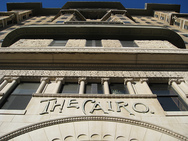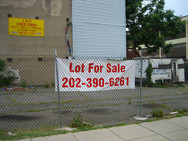Changing Height Act not biggest priority, speakers argue
Does the 1910 Height Act enhance or detract from Washington’s livability? This debate goes to the heart of the tension between the nation’s desire for an attractive and symbolic capital and the interests of those who call the city home, now and in the future.
The District’s 1972 Home Rule Charter lists building height amongst ten issue areas that the District government has no power to regulate, leaving the power to amend or make exemptions to the law entirely in the hands of Congress.
Last night, speakers explored the Height Act at a Committee of 100 forum marking the law’s centennial.
Aside from the hundredth anniversary, the proposed Burnham Place development of buildings atop the Union Station railroad tracks is pushing an examination of the Height Act’s purpose. While the act limits heights, it leaves ambiguity about where to measure the height from.
If these building count from the sidewalk on the bridge as opposed to from the ground below the tracks, they could rise above surrounding structures. Some consider this a problem. On the other hand, since the buildings won’t be able to use the track level and can’t build below grade like most buildings, the development including the cost of decking the tracks might not be feasible otherwise.
Bradley Truding, a senior legislative aide to Congresswoman Eleanor Holmes Norton (D-DC), examined the legislative record surrounding the Height Act’s passage at a time when the technology to erect very tall buildings had just been developed. The stated reasoning at the time (based on then-existing laws in Boston and Chicago) was to ensure fire safety and building integrity, though the height limits have nothing to do with how high firefighters’ ladders or hoses could reach at the time.
Though there is no definitive answer, newspaper articles of the time support the conclusion that the law was enacted primarily for aesthetic reasons. They invoke George Washington and Thomas Jefferson’s stated desire that Washington be modeled on European capitals, in particular Paris, which is mostly devoid of skyscrapers (but is still much denser than DC.)
Some have argued that the city is missing out on the tax revenue that could be generated by additional property built higher than the Act allows. However, Truding cited a Government Accountability Office report that blames the District’s inability to tax non-resident income or to levy property taxes on federal buildings for the lion’s share of the local government’s “structural imbalance.”
Smart growth proponents needn’t get worked up about changing the Height Act, as there are many opportunities for new development in the District that would not require a change to the law. Attorney and panelist Steven Sher, citing NoMa and and Navy Yard as areas that Metro stations have transformed, rightly called on the Zoning Commission to rethink existing zoning-imposed height regulations around Metro stations.
It is eminently possible to accommodate a growing population, while maintaining the city’s unique character, with well-designed and well-located new developments and by restoring and enhancing existing buildings. Before we consider making downtown buildings taller, why not move forward with redeveloping the city’s copious acres of empty lots and unused federal property?
In the longer term, a good way to balance preservationists’ valid aesthetic concerns with the need for more compact development, particularly around transit, is for Congress to amend the Height Act to give the DC Zoning Commission — in consultation with affected stakeholders and planning bodies — the power to make exemptions based on the unique character and needs of individual neighborhoods.
Since the human scale of its built environment is part of what attracts so many to live in the capital city, it is unlikely that greater local control over building height, if exercised democratically, would degrade those qualities which give Washington its sense of self.


